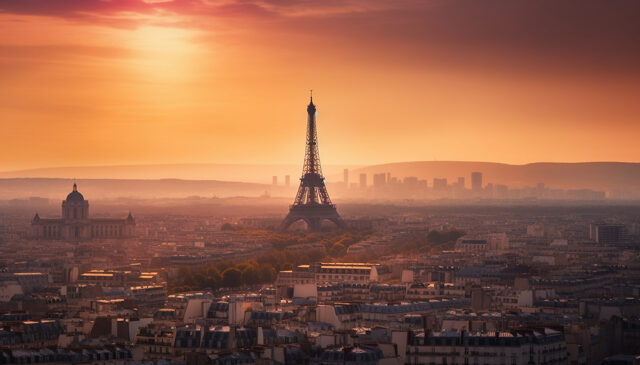Introduction
Paris, the capital of France, is a city that has captivated the hearts of travelers for centuries. With its rich history, iconic landmarks, and romantic charm, it is no wonder that Paris continues to be one of the most popular tourist destinations in the world. In this guide, we will take you on a journey through the city, exploring its most visited tourist attractions that showcase the essence of Parisian culture, art, and history.
Eiffel Tower
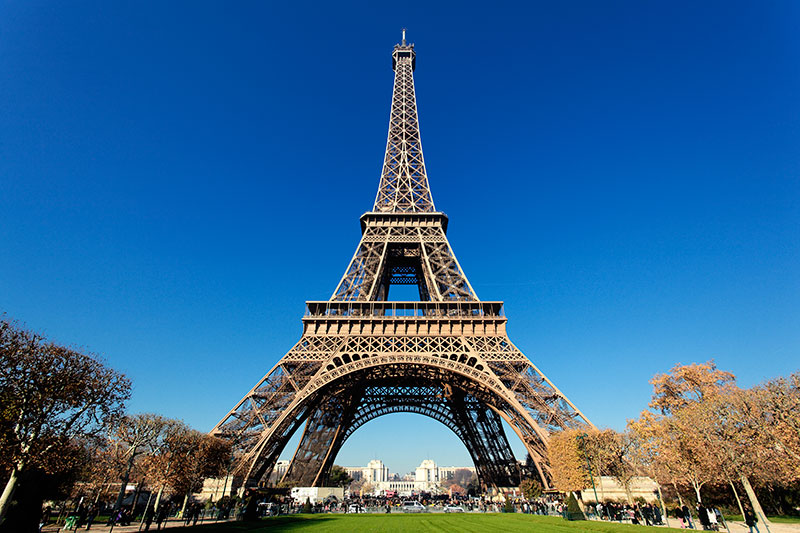
The Eiffel Tower, known as La Tour Eiffel in French, is an iconic symbol of Paris and one of the most recognizable structures in the world. The Eiffel Tower is not just a monumental landmark; it is a testament to human creativity and ingenuity. Its commanding presence, panoramic views, and cultural significance make it a must-visit attraction for anyone exploring the vibrant city of Paris. Whether you choose to ascend to its summit or simply admire it from below
The Eiffel Tower was designed by engineer Gustave Eiffel and was constructed between 1887 and 1889. It was built as the entrance arch for the Exposition Universelle (World’s Fair) held in Paris in 1889 to celebrate the 100th anniversary of the French Revolution.
The tower stands at a height of 330 meters (1,083 feet) and was the tallest man-made structure in the world until the completion of the Chrysler Building in New York City in 1930. It consists of three levels that visitors can explore.
The first level is situated 57 meters (187 feet) above the ground and features a transparent glass floor, giving visitors a unique perspective of the views below.
The second level, located at 115 meters (377 feet), offers panoramic views of the city. It houses a range of facilities, including restaurants, cafes, souvenir shops, and an exhibition about the tower’s construction.
The third level, at a height of 276 meters (905 feet), is the highest accessible point for visitors. From here, one can enjoy breathtaking 360-degree views of Paris. On a clear day, you can see landmarks such as the Arc de Triomphe, the Louvre Museum, and Notre Dame Cathedral.
Visitors to the Eiffel Tower have the option to ascend using elevators or climb the stairs. Multiple elevators transport visitors to the different levels of the tower. However, the stairs can also be an adventurous option for those looking for a more active experience. The stairs lead up to the first and second levels, offering a different perspective and a chance to appreciate the intricate ironwork up close.
The Eiffel Tower is a dazzling spectacle at night when it is illuminated with thousands of lights. Every evening, starting from sunset until 1 a.m., the tower sparkles for five minutes every hour, creating a mesmerizing light show. This enchanting display is a must-see and adds to the romantic ambiance of the city.
Beyond its architectural and engineering marvel, the Eiffel Tower holds immense cultural significance. It has become an enduring symbol of Paris and a representation of the city’s romantic charm. The tower has been presented in numerous films, literature, and artwork, further cementing its place in popular culture
The Eiffel Tower attracts millions of visitors each year, so it’s highly recommended to plan your visit. Tickets can be purchased online or at the tower itself, and it’s recommended to book in advance to secure your preferred time slot. During peak seasons, queues can be long, but the wait is usually worth it once you reach the top and witness the breathtaking views of Paris.
The Eiffel Tower is located on the Champ de Mars, a large public greenspace. This area provides a picturesque setting for picnics, leisurely walks, and enjoying the beauty of the tower from the ground. It’s a popular spot for both locals and tourists alike.
Louvre Museum
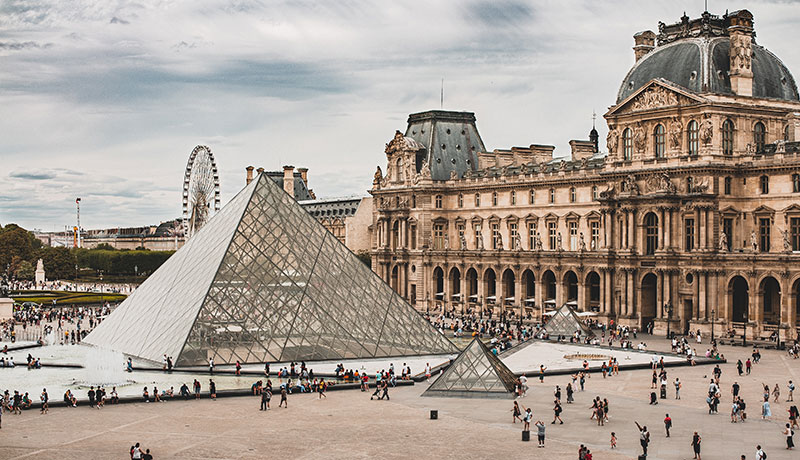
The Louvre Museum, known as Musée du Louvre in French, is located in the heart of Paris and is one of the world’s largest and most visited museums. Originally a medieval fortress, the Louvre was transformed into a royal palace in the 16th century.
The iconic glass pyramid entrance, designed by architect I.M. Pei, was added in 1989. The Louvre Museum is a unique place of human creativity and history, highlighting some of the world’s most iconic artworks. A visit to the Louvre offers a remarkable journey through different cultures, periods, and artistic movements.
The Louvre Museum houses a vast and diverse collection that spans over 9,000 years of history. It contains approximately 38,000 works of art, including paintings, sculptures, decorative arts, and archeological artifacts. Some of the most famous masterpieces found in the Louvre include:
- Leonardo da Vinci’s “Mona Lisa-” The enigmatic portrait of a young woman is one of the most recognized paintings in the world. It is housed in its climate-controlled gallery and attracts a large crowd of visitors.
- “Venus de Milo“- This ancient Greek marble statue of the goddess Aphrodite (Venus) is renowned for its beauty and elegant pose. It is one of the most celebrated sculptures in the world.
- “Winged Victory of Samothrace” This Hellenistic sculpture depicts the Greek goddess Nike (Victory) and is considered a masterpiece of ancient Greek art. It is displayed on a grand staircase and captivates visitors with its sense of movement and grace.
- “The Raft of the Medusa“- by Théodore Géricault: This powerful and dramatic painting depicts a true historical event and is regarded as a seminal work of French Romanticism.
These are just a few examples of exceptional artworks that can be found within the Louvre Museum’s extensive collection.
Departments and Galleries– The Louvre Museum is divided into several departments, each dedicated to specific periods and regions of art history. Some of the notable departments include:
- Egyptian Antiquities– This department houses an extensive collection of ancient Egyptian artifacts, including mummies, statues, and hieroglyphic inscriptions.
- Greek, Etruscan, and Roman Antiquities– Visitors can explore the rich heritage of ancient Greece, Etruria, and Rome through sculptures, pottery, jewelry, and architectural fragments.
- Paintings The Louvre’s painting collection is vast and encompasses works from the Middle Ages to the 19th century. It includes famous pieces by artists such as Rembrandt, Vermeer, Delacroix, and many others.
- Decorative Arts– This department showcases luxurious objects, furniture, and decorative items from various periods, including the opulent furnishings of the former French royal apartments.
Visitor Experience– Due to the Louvre Museum’s immense size and popularity, it’s advisable to plan your visit. The museum offers different ticket options, including timed-entry tickets, to manage crowds. It’s recommended to purchase tickets online or arrive early to avoid long queues.
The Louvre can be overwhelming, so it’s helpful to have a plan or focus on specific areas of interest. Interactive maps and audio guides are available to navigate the museum and learn more about the artworks.
Other Facilities: In addition to the art collections, the Louvre Museum offers a range of facilities for visitors. These include cafés, restaurants, shops, and even a bookstore specializing in art and art history publications. There are also educational programs, temporary exhibitions, and lectures that provide further insights into the museum’s collections.
Notre-Dame Cathedral
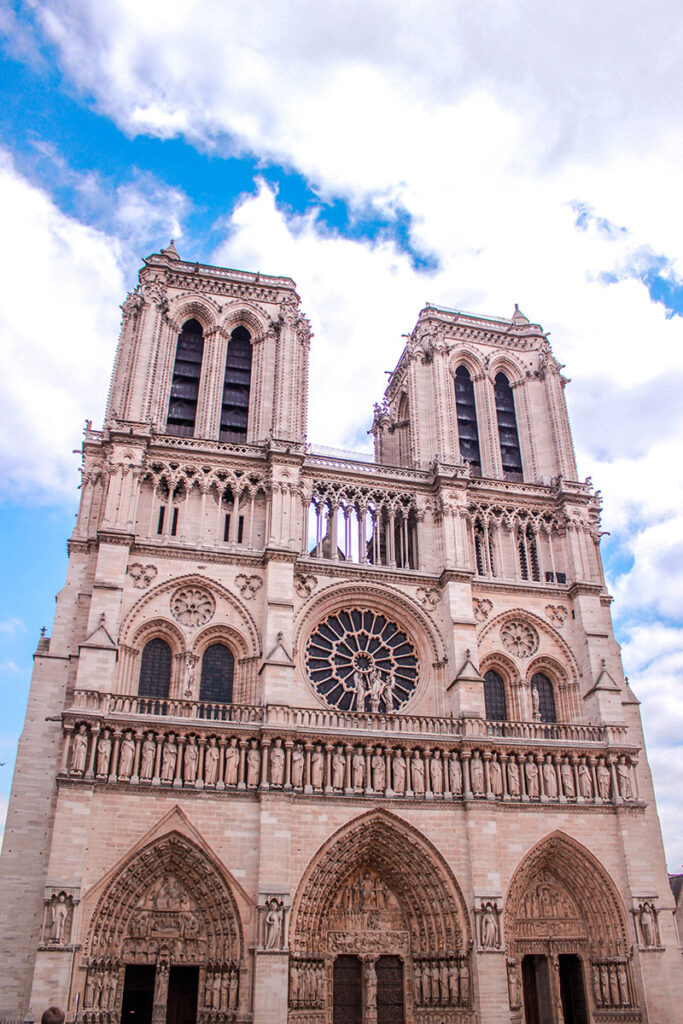
Notre-Dame Cathedral, known as Cathédrale Notre-Dame de Paris in French, is a masterpiece of Gothic architecture and one of the most famous cathedrals in the world. Construction of the cathedral began in 1163 and took nearly 200 years to complete. It has stood as a symbol of Paris for centuries and witnessed significant historical events.
Notre-Dame Cathedral, known as Cathédrale Notre-Dame de Paris in French, is a masterpiece of Gothic architecture and one of the most famous cathedrals in the world. Construction of the cathedral began in 1163 and took nearly 200 years to complete. It has stood as a symbol of Paris for centuries and witnessed significant historical events.
The exterior of Notre Dame Cathedral is a remarkable display of Gothic architectural elements. The façade features intricate stone carvings, including numerous statues depicting biblical figures and saints. The three monumental portals—the Portal of the Last Judgment, the Portal of the Virgin, and the Portal of Saint Anne—showcase elaborate sculptures and detailed ornamentation.
The cathedral’s most recognizable feature is its two iconic towers, each reaching a height of approximately 69 meters (226 feet). Visitors can climb the towers to enjoy panoramic views of Paris and see the famous gargoyles and chimera sculptures up close.
Stepping inside Notre Dame Cathedral reveals a grand and awe-inspiring interior. The soaring nave, with its ribbed vaults and pointed arches, creates a sense of verticality and spaciousness. The stained glass windows, dating from the 13th to the 19th centuries, filter multicolored light into the cathedral, creating a mystical atmosphere.
The Rose Windows are a particular highlight of Notre Dame. These large circular stained glass windows, located on the west façade and transept, depict religious scenes and saints in vibrant hues. The South Rose Window, in particular, is renowned for its intricate design and breathtaking beauty.
The choir area features beautiful wooden stalls adorned with carvings, and the Great Organ, one of the largest organs in France, stands prominently above the western entrance.
Notre Dame Cathedral houses a treasury that displays a collection of precious religious artifacts, including liturgical objects, vestments, and religious sculptures. Among the notable items is the Crown of Thorns, believed to have been worn by Jesus Christ during his crucifixion. The cathedral also houses fragments of the True Cross and a nail said to be from the crucifixion.
Cathedral holds immense cultural and historical significance. It has been the setting for numerous important events, including the coronation of Napoleon Bonaparte and the beatification of Joan of Arc. The cathedral has also inspired countless works of literature, art, and film, including Victor Hugo’s famous novel “The Hunchback of Notre Dame.”
Notre Dame Cathedral attracts millions of visitors each year. Entry to the cathedral is free, but there may be queues, especially during peak tourist seasons. It is advisable to arrive early or consider visiting during less crowded times.
Visitors can explore the cathedral on their own or join a guided tour to learn more about its history and architectural features. Climbing the towers provides a unique perspective of the cathedral and panoramic views of Paris.
Champs-Élysées
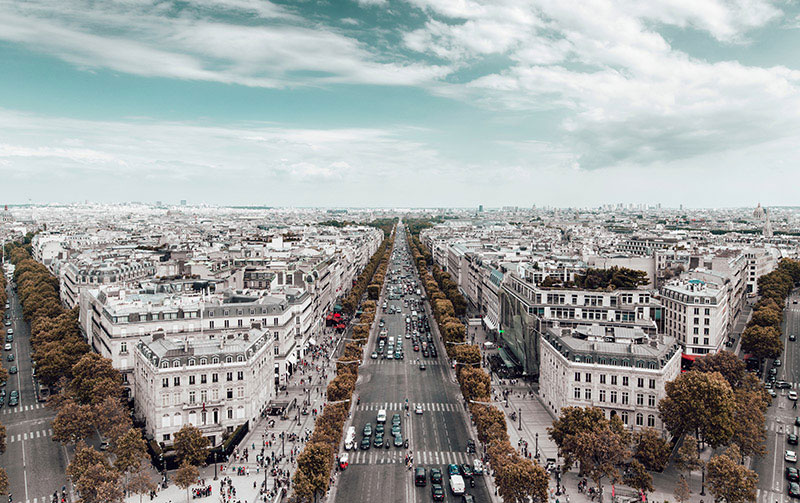
The Champs-Élysées is a famous avenue located in the heart of Paris, stretching for approximately 1.9 kilometers (1.2 miles) from the Place de la Concorde to the Arc de Triomphe. It is considered one of the most prestigious avenues in the world and serves as a symbol of Parisian elegance and luxury.
The avenue is renowned for its wide, tree-lined promenade and grand architectural features. It was designed in the 17th century as an extension of the Tuileries Garden by landscape architect André Le Nôtre. The design aimed to create a prestigious promenade adorned with gardens and monumental structures.
Today, the Champs-Élysées is characterized by its elegant buildings, luxury shops, cafes, theaters, and prestigious hotels. The architecture along the avenue represents a mix of architectural styles from different periods, including Beaux-Arts, Art Nouveau, and Art Deco.
The Champs-Élysées is home to several iconic landmarks and notable establishments:
- Arc de Triomphe- Located at the western end of the avenue, the Arc de Triomphe is a monumental arch that honors those who fought and died for France in various wars. It stands as a symbol of victory and national pride.
- Place de la Concorde- Situated at the eastern end of the avenue, the Place de la Concorde is one of the major public squares in Paris. It is known for its iconic Luxor Obelisk and fountains and serves as a meeting point for various significant routes in the city.
- Grand Palais and Petit Palais- These grand exhibition halls are located on the southern side of the Champs-Élysées. They were constructed for the Universal Exposition of 1900 and now serve as venues for art exhibitions and cultural events
The Champs-Élysées is renowned for its high-end boutiques, flagship stores of luxury brands, and prestigious department stores. Visitors can explore a wide range of fashion, cosmetics, jewelry, and specialty stores along the avenue. It is a popular destination for shopping enthusiasts seeking designer labels and unique luxury items.
Additionally, the Champs-Élysées offers numerous dining options, including renowned restaurants, charming cafes, and trendy eateries. Visitors can indulge in fine French cuisine, savor a cup of coffee while people-watching, or enjoy a leisurely meal at one of the sidewalk terraces.
Palace of Versailles
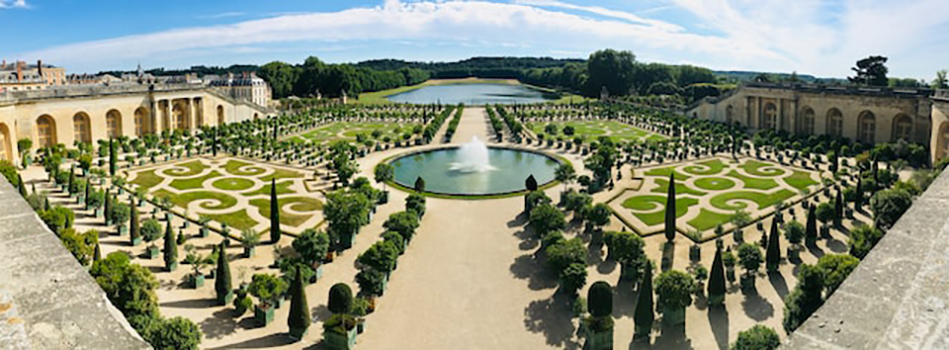
The Palace of Versailles, known as Château de Versailles in French, is a magnificent royal residence located in the city of Versailles, approximately 20 kilometers (12 miles) southwest of Paris. It was originally a hunting lodge built by Louis XIII in 1624 but was later transformed into a grand palace by his son, Louis XIV, who desired a symbol of his absolute power.
The Palace of Versailles is renowned for its fascinating architecture and vast gardens. The palace itself is a prime example of French Baroque architecture and features lavish decoration, grand facades, and intricate detailing. It consists of multiple wings, courtyards, and a central building known as the Hall of Mirrors.
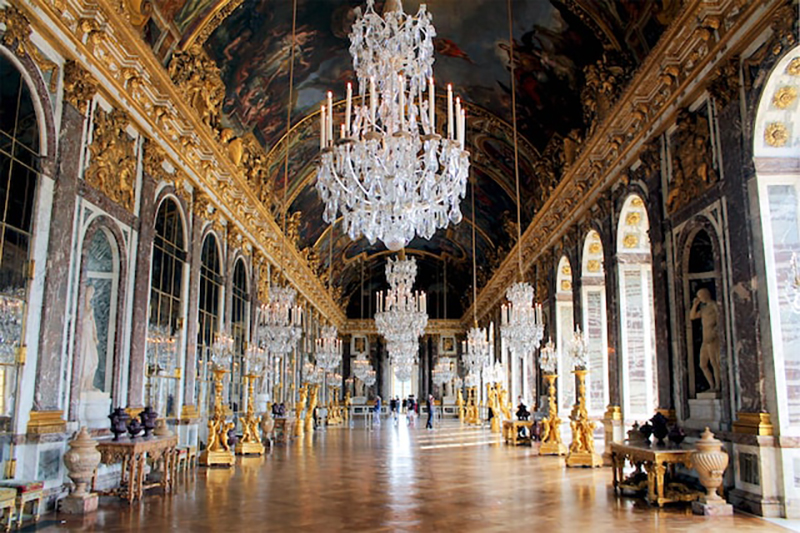
The Hall of Mirrors is one of the most famous rooms in the palace. It is a gallery adorned with seventeen mirrored arches, crystal chandeliers, and ornate paintings, and it served as a ceremonial and reception space during the time of Louis XIV.
The gardens of Versailles are equally magnificent. Designed by André Le Nôtre, they span over 800 hectares (1,976 acres) and are renowned for their geometrically arranged flowerbeds, fountains, statues, and grand avenues. The gardens provide a stunning backdrop to the palace and are a delight to explore.
Conclusion
Paris, with its timeless charm and remarkable landmarks, continues to attract travelers from every corner of the globe. From the iconic Eiffel Tower to the world-renowned Louvre Museum and the bohemian streets of Montmartre, the City of Love offers a rich tapestry of cultural experiences and unforgettable moments. Whether you’re an art lover, or you’re admiring this city’s rich history or you are just a romantic soul, Paris won’t let you down. If you have enough time and enthusiasam you can visit other cities and destinations in Europe, Read More

